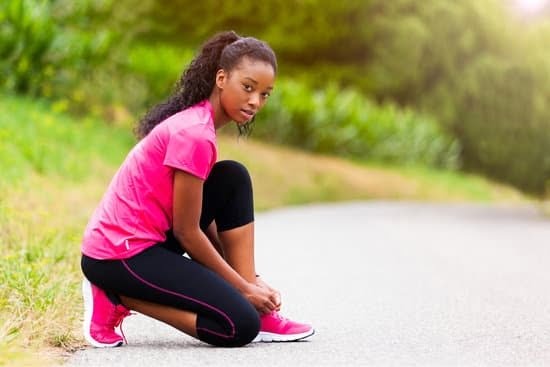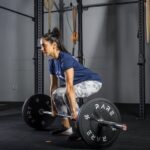When it comes to choosing the right workout attire, one of the key considerations that often arises is whether your workout clothes should be tight fitting. This decision can impact not only your comfort during exercise but also your performance and overall experience. In this article, we will delve into the importance of workout clothes fit and explore the benefits and drawbacks of opting for tight-fitting garments.
The fit of your workout clothes plays a significant role in how you move and feel during physical activity. Tight-fitting workout clothes offer certain advantages such as providing support to muscles, reducing chafing, and enhancing flexibility. By hugging the body closely, these garments can also help improve blood circulation and increase awareness of body alignment while exercising.
However, despite the potential benefits, there are also drawbacks to consider when it comes to tight-fitting workout clothes. Some individuals may find these garments restrictive or uncomfortable, leading to decreased motivation or even physical discomfort during their workouts. Finding the right balance between comfort and compression is crucial in deciding whether tight-fitting attire is suitable for your fitness routine.
Benefits of Tight-Fitting Workout Clothes
When it comes to workout clothes, the debate over whether they should be tight fitting is one that many fitness enthusiasts engage in. Tight-fitting workout clothes have their own set of benefits that make them a popular choice for many individuals hitting the gym or practicing yoga.
One key advantage of wearing tight-fitting workout clothes is the support they provide during physical activity. The compression offered by snug attire can help improve circulation and muscle alignment, ultimately enhancing performance and reducing the risk of injury.
Another benefit of opting for tight-fitting workout clothes is the moisture-wicking properties commonly found in these garments. The close fit allows for better sweat management, keeping you dry and comfortable throughout your exercise routine. Additionally, tight-fitting workout clothes can also help improve proprioception, which is your body’s ability to sense its position in space. This enhanced awareness can lead to better form and technique during workouts, maximizing the effectiveness of your movements.
While there are numerous advantages to wearing tight-fitting workout clothes, it’s important to consider potential drawbacks as well. Some individuals may find these garments restrictive or uncomfortable, hindering their overall workout experience. It’s crucial to strike a balance between comfort and compression when choosing your exercise attire. Finding the right fit that provides support without sacrificing freedom of movement is essential for optimal performance and enjoyment during physical activity.
Drawbacks of Tight-Fitting Workout Clothes
Increased Risk of Chafing
While tight-fitting workout clothes are often praised for their compression benefits, one major drawback is the increased risk of chafing. The snug fit of these garments can sometimes lead to friction against the skin, especially during high-intensity exercises or activities that involve repetitive movements. This constant rubbing can result in irritation, redness, and even blisters, which can be not only uncomfortable but also detrimental to your workout routine.
Restricted Range of Motion
Another downside of wearing tight-fitting workout clothes is the potential restriction of your range of motion. If the clothing is overly compressive, it may limit your ability to move freely during exercises such as squats, lunges, or yoga poses. This restriction can not only hinder your performance but also increase the risk of injury by forcing your body into unnatural positions to compensate for the lack of flexibility in your attire.
Potential Discomfort and Distraction
While some individuals find tight-fitting workout clothes to be comfortable and supportive, others may experience discomfort and distraction when wearing such garments. The constant pressure on certain areas of the body can feel constricting and may cause you to focus more on readjusting your clothing than on completing your workout effectively. Additionally, tight clothes that are too restrictive can hinder proper blood circulation, leading to feelings of discomfort and fatigue during exercise.
Finding the Right Balance
When it comes to choosing the right workout clothes, finding the perfect balance between comfort and compression is key. While some may argue that should your workout clothes be tight fitting for maximum performance, others prioritize comfort above all else. The truth is, both factors play a significant role in enhancing your workout experience.
Here are some benefits of tight-fitting workout clothes:
- Compression: Tight-fitting workout clothes can provide compression, which can help improve blood circulation and reduce muscle fatigue during exercise.
- Support: These clothes offer support for your muscles and joints, which can enhance your performance and prevent injuries.
- Moisture-wicking: Many tight-fitting fabrics are designed to wick away sweat from your body, keeping you dry and comfortable throughout your workout.
On the other hand, there are also drawbacks to consider when it comes to tight-fitting workout clothes.
- Restricted movement: Clothes that are too tight may restrict your range of motion, making it harder to perform certain exercises.
- Discomfort: If your workout clothes are too tight, they can be uncomfortable, leading to chafing or irritation during your workouts.
- Body image issues: Some individuals may feel self-conscious in tight-fitting clothes, affecting their confidence and motivation during exercise.
Ultimately, the decision on how tight your workout clothes should be depends on personal preference and the type of activity you’ll be engaging in. Prioritize finding a balance between comfort and compression to ensure that you can move freely while still reaping the benefits of support and performance enhancement. Remember that the perfect fit can vary from person to person, so take the time to experiment with different styles and fabrics until you find what works best for you.
The Impact of Fabric Choice on Fit
When it comes to workout clothes, the impact of fabric choice on fit cannot be underestimated. The type of fabric you choose for your activewear can significantly affect how well your clothes fit and function during exercise. Different fabrics offer varying levels of stretch, moisture-wicking capabilities, and breathability, all of which play a role in determining the overall fit of your workout attire.
Stretch and Flexibility
One key factor to consider when selecting workout clothes is the amount of stretch and flexibility offered by the fabric. Tight-fitting workout clothes made from stretchy materials like spandex or elastane can provide a snug yet comfortable fit that allows for unrestricted movement during physical activity. These fabrics are designed to move with your body, ensuring that your clothing stays in place while you work out.
Moisture-Wicking Properties
Another important aspect to consider when choosing workout clothes is their ability to wick away moisture. Fabrics that have moisture-wicking properties help draw sweat away from the skin, keeping you dry and comfortable during your workouts. This feature is particularly beneficial for tight-fitting workout clothes as it helps prevent chafing and irritation while also maintaining the integrity of the fabric’s fit.
Breathability
Breathability is another crucial factor to consider in fabric selection for tight-fitting workout clothes. Fabrics that are breathable allow air to circulate around your body, preventing overheating and promoting overall comfort during exercise.
Look for materials like mesh or lightweight blends that offer superior breathability without compromising on fit or compression. Ultimately, choosing workout clothes with the right fabric can enhance the overall fit and performance of your activewear, ensuring that you stay comfortable and supported throughout your fitness routine.
How Tight Should Your Workout Clothes Really Be?
When it comes to workout clothes, one common question that many individuals have is how tight their workout attire should really be. The answer to this question can vary depending on personal preference, the type of exercise being performed, and individual body shape. Tight-fitting workout clothes have gained popularity in recent years due to their various benefits, but finding the right balance between tightness and comfort is key.
Tight-fitting workout clothes offer a range of benefits for individuals during exercise. They provide compression that can help improve blood circulation and muscle support, reducing the risk of injury and muscle soreness. Additionally, form-fitting attire can enhance performance by minimizing excess fabric that could get in the way during movement. This close fit also allows for better sweat absorption and moisture-wicking capabilities, keeping you dry and comfortable throughout your workout.
Despite the numerous advantages of tight-fitting workout clothes, there are some drawbacks to consider as well. One common concern with tight attire is restriction of movement, which can hinder proper exercise form or limit flexibility.
Some individuals may find overly tight clothing uncomfortable or restrictive, leading to distractions during their workout session. It’s crucial to strike a balance where the clothing fits snugly enough to provide benefits like compression and moisture-wicking but still allows for freedom of movement and overall comfort.
| Benefit | Drawback |
|---|---|
| Improved blood circulation and muscle support | Restriction of movement |
| Enhanced performance by minimizing excess fabric interference | Potential discomfort or distraction during workouts |
Tips for Selecting the Perfect Fit
When it comes to selecting the perfect fit for your workout clothes, there are a few key factors to consider. One of the most important questions to ask yourself is, should your workout clothes be tight fitting? The answer ultimately depends on the type of exercise you will be doing and personal preference. However, there are certain advantages to wearing snug workout attire.
Tight-fitting workout clothes can help improve your performance during physical activity by providing compression and support to your muscles. This can result in better blood circulation, increased oxygen flow to the muscles, and reduced muscle fatigue. Additionally, form-fitting apparel can enhance your range of motion and flexibility, allowing you to move freely without any restrictions.
On the other hand, there are some drawbacks to excessively tight workout clothes that should be taken into consideration. If your clothing is too constricting, it may restrict blood flow or cause discomfort during intense workouts. Overly tight apparel can also lead to chafing or skin irritation, especially if the fabric is not breathable. It’s important to find a balance between snugness and comfort when choosing your workout attire.
| Advantages of Tight-Fitting Workout Clothes | Drawbacks of Excessively Tight Workout Clothes |
|---|---|
| Enhanced performance through compression and support | Possible restriction of blood flow or discomfort during intense workouts |
| Improved range of motion and flexibility | Increased risk of chafing or skin irritation |
Fashion vs Function
When it comes to choosing workout attire, striking the balance between fashion and function is key. While stylish workout clothes can boost your motivation and confidence, performance should not be compromised. Finding the perfect fit that combines both style and functionality is essential for a successful workout session.
To help you navigate this balance, here are some tips for selecting the perfect fit for your workout clothes:
- Consider the type of exercise: Different types of workouts may require different levels of compression and fit. For high-intensity activities like running or HIIT, tight-fitting clothes can provide support and reduce friction. On the other hand, looser fitting clothes may be more comfortable for activities like yoga or Pilates.
- Focus on comfort: While it’s important to find clothes that fit well and enhance your performance, comfort should always be a top priority. Tight-fitting clothes that restrict movement or feel constricting could hinder your workout. Opt for fabrics with stretch and moisture-wicking properties for maximum comfort.
- Experiment with different styles: Don’t be afraid to try out different styles and fits to see what works best for you. Some people may prefer a snug fit while others may feel more comfortable in looser clothing. Ultimately, the perfect balance between style and function is a personal preference.
By considering these factors and finding the right balance between fashion and function, you can elevate your workout experience while feeling confident in your outfit choice. Remember that ultimately, your workout clothes should enhance your performance and make you feel good as you work towards your fitness goals.
Conclusion
When it comes to deciding whether your workout clothes should be tight fitting, the answer truly depends on personal preference and comfort level. While some benefits of tight-fitting workout clothes include improved performance, muscle support, and moisture-wicking capabilities, there are also drawbacks such as restricted movement and potential discomfort. Finding the right balance between comfort and compression is crucial in ensuring that you get the most out of your exercise routine without sacrificing your comfort.
Ultimately, the decision on how tight your workout clothes should be should be based on what makes you feel confident and supported during your fitness journey. It’s essential to consider factors such as fabric choice, fit preferences, and activity level when selecting the perfect workout attire. Remember that finding the right balance between fashion and function is key in optimizing your performance while still looking stylish during your workouts.
In conclusion, whether you prefer loose or tight-fitting workout clothes, what matters most is that you feel comfortable and confident in what you’re wearing. Listen to your body’s cues and choose workout attire that allows you to move freely while providing the support you need.
By making the right choice for your fitness journey, you can enhance not only your performance but also your overall enjoyment of exercising. So go ahead, experiment with different fits and styles until you find what works best for you – because after all, feeling good in your workout gear is half the battle won in achieving those fitness goals.
Frequently Asked Questions
Are Workout Clothes Supposed to Be Tight?
Workout clothes are typically supposed to be snug but not overly tight. This allows for freedom of movement during exercise without feeling restricted. The key is finding a balance between comfort and functionality in order to get the most out of your workout.
How Should Gym Clothes Fit?
Gym clothes should fit well enough to stay in place during physical activity without causing discomfort or hindering movement. Whether it’s leggings, shorts, tops, or sports bras, the right fit is essential for optimal performance and confidence while working out.
Is It Important to Wear Loose Fitting Clothing When Exercising?
Wearing loose-fitting clothing during exercise can have its benefits depending on the type of activity. For activities like yoga or Pilates, where flexibility is crucial, looser clothing may be more comfortable.
However, for high-intensity workouts or running, snugger fitting clothes can help prevent chafing and distractions while moving. Ultimately, it’s about personal preference and what makes you feel comfortable during exercise.

Passionate about providing useful information to anyone with an interest in the field of Personal Training, I strive to pass on to our readers quality information and to answer any questions about Personal Trainers, the work they do and how to become one.





